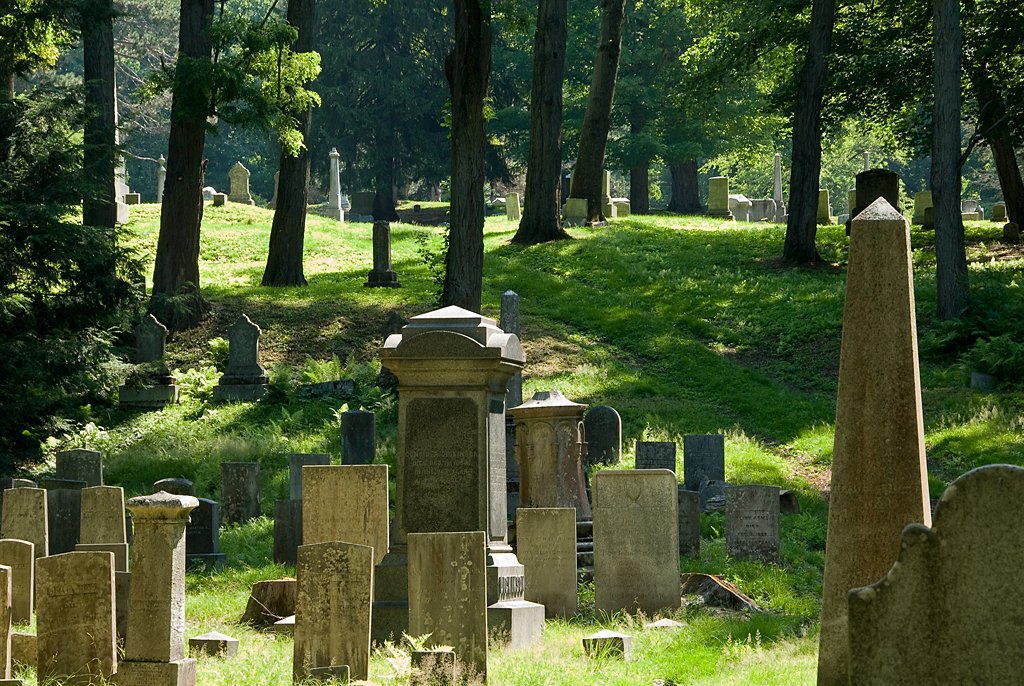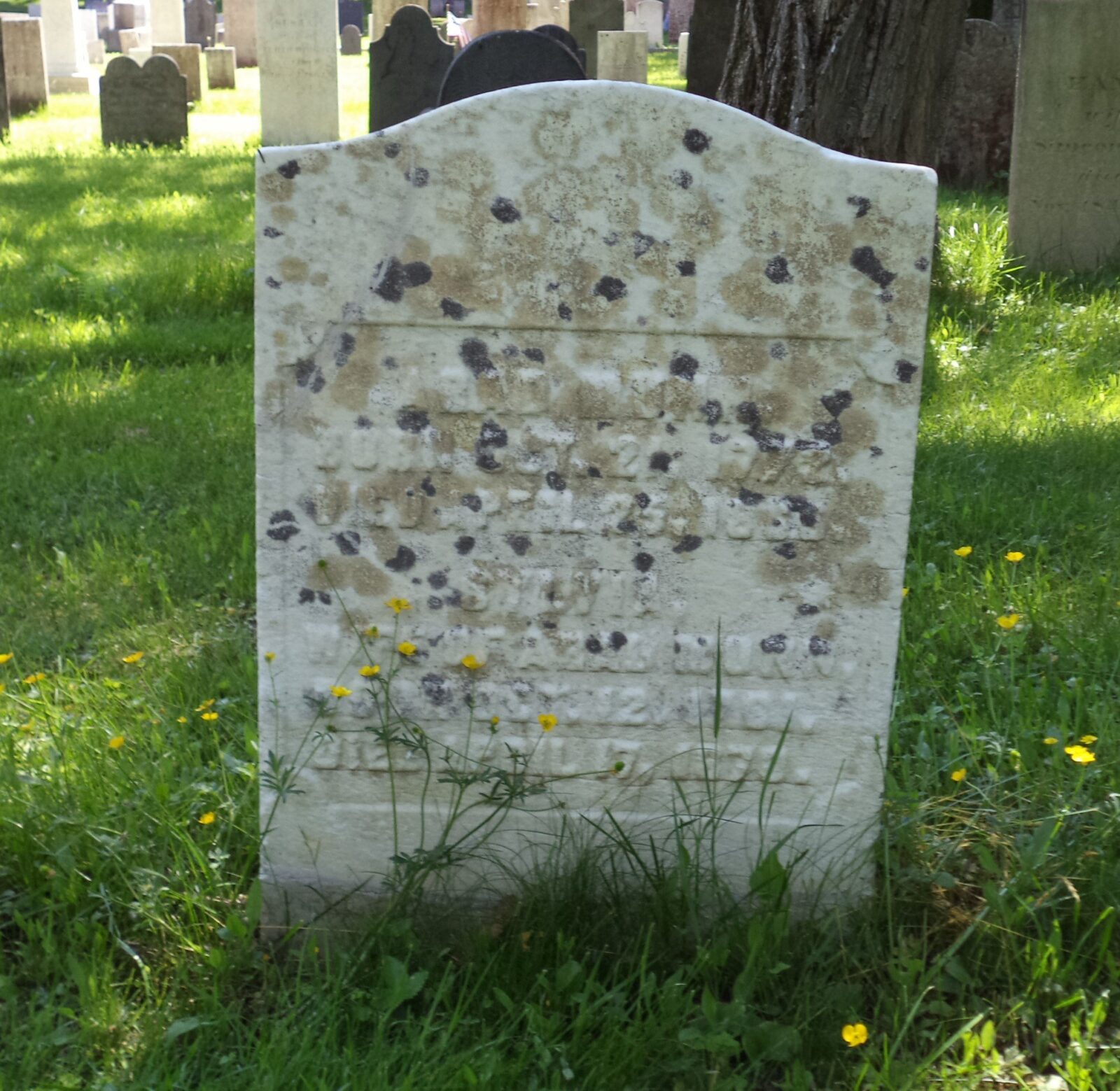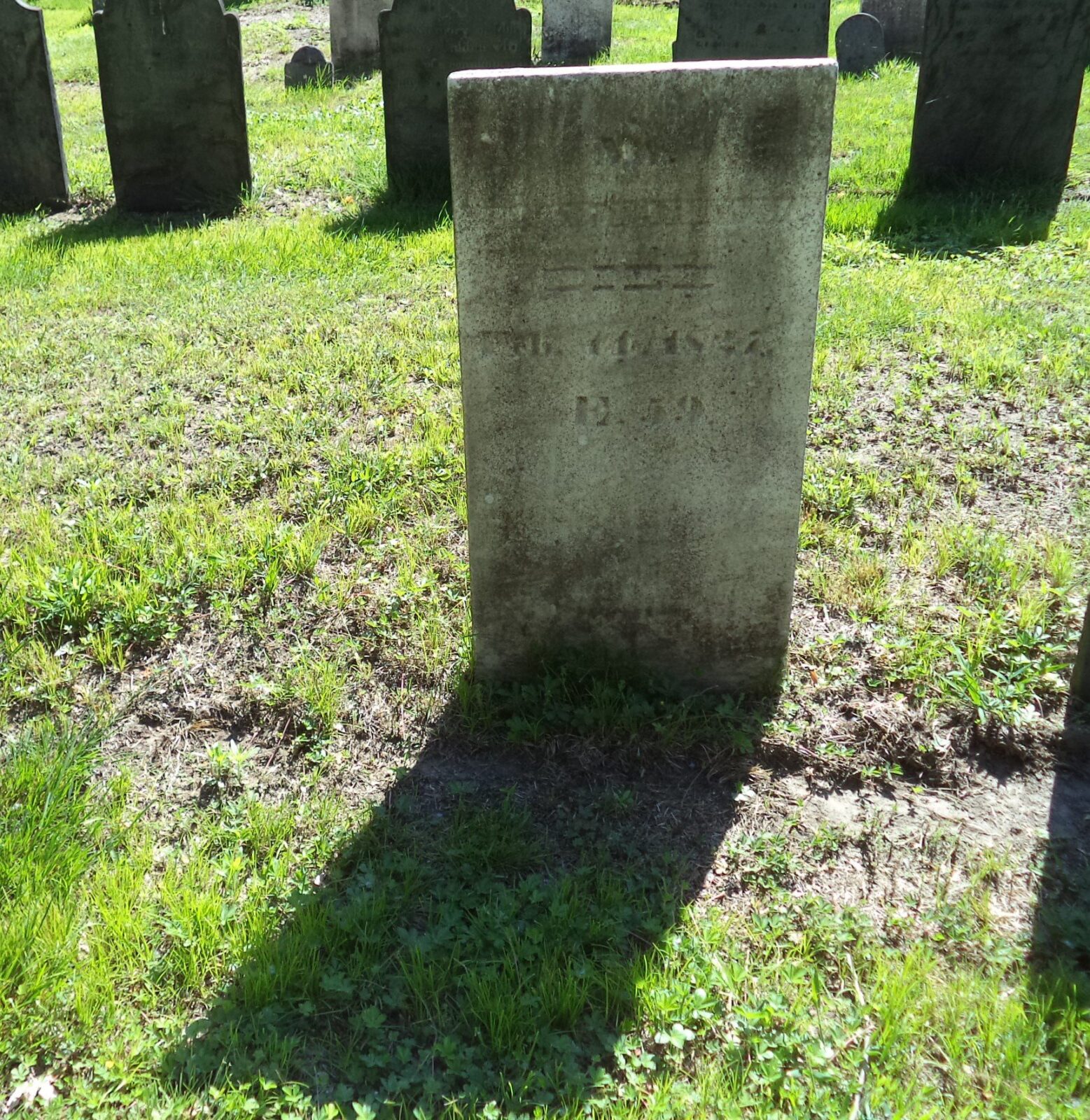
The death of a loved one can be sudden and shocking, or the inevitable result of a long decline. Either way, those that remain find themselves tasked with the immediate details of death, such as preparing the body for burial, procuring a coffin, arranging a viewing and/or funeral, finding a burial site, and digging a grave. The sexton of the town or church in which the burial took place often did this last task of grave digging. Yet, in Deerfield, there was another option.
Arad Munn (1772-1866) was a carpenter and cartwright with a house and shop across the street from the Laurel Hill Cemetery. He purchased this property in 1815 and lived there until his death in 1866.[1] Probably because of his proximity to the cemetery, Arad became an in-demand gravedigger in the 1820s. Looking through probate inventories for Deerfield residents during the period Arad Munn lived across from the cemetery, his name comes up eight times between 1814 and 1829 for grave digging. This is in contrast to Isaac Ball (1778-1852) the town sexton, whose name only appears twice in probate records for digging graves, in the 1830s. Many probate records do not include a specific name for grave digging, or it is included under the generic term “funeral expenses.”
Of the eight graves Arad dug, six were in Laurel Hill, one was in the Albany Road Cemetery, and one grave’s location is unknown.[2] Graves dug in South Deerfield, West Deerfield or other places employed nearby gravediggers. Both of Isaac Ball’s graves were in Laurel Hill. Isaac, like Arad, lived right next to cemetery.[3] Clearly, location was key to grave digging.
At the peak of Arad’s grave digging days, he was in his fifties, with a wife and eight children to support. Being a carpenter and cartwright, he was no stranger to physical labor, and probably strong and fit, and able to dig graves. The appeal of the job was likely the chance to make some extra money for his family. The gravedigger was usually guaranteed payment for his services, as probate records indicate that gravediggers, coffin makers, doctors caring for the last illness, and others involved at the end of life are paid in full by the estate, regardless of insolvency, while other creditors take their chances on being paid. Arad generally charged $1.50 for his services, with higher prices for winter burials (up to $3.50) which presumably involve more time and effort. Averaging out his charges for the eight graves, he was paid $2.00 per grave. An inflation calculator puts that $2.00 of 1827 (the year he did the most burials) at $58.41 in 2022 money.
A search of the Internet suggests that it takes between eight and twelve hours to dig a grave alone with only hand tools, depending on the soil type. Assuming this is true, Arad would have spent most of his day digging the grave for what would be very low pay. In each probate record, only one person is listed as digging the grave, but it is possible that Arad and the other gravediggers had help. In the 1820s, Arad had two teenage sons, Osburn and Philo. While the oldest, Osburn, was only five years old when Arad dug his first grave, he was twelve when Arad began to dig graves regularly. The last recorded grave dug by Arad was in 1829, when Osburn was twenty, and Philo, the next oldest son, was sixteen. It seems likely one or both boys would have helped their father dig, and cut down on the hours of work for the job. The Internet suggests that with help, usually one or two other people, digging a grave takes only four to six hours.
Arad’s side job was a result of location and shrewdness. His convenient location next the cemetery gave him the opportunity to dig the graves. His business skills had Arad charging around a $1.50 for the service, while Isaac Ball, the sexton, was charging $3.00 per grave. Arad knew how to make the most of his opportunities.
[1] Susan McGowan and Amelia F. Miller, Family & Landscape: Deerfield Homelots from 1671 (Deerfield, MA: Pocumtuck Valley Memorial Association, 1996), p. 127.
[2] The eight graves Arad dug were John Bardwell in 1814; Zadock Hawks in 1821; William Barnard in 1822; Elizabeth Bardwell, Henry Bardwell, Allen Smith and Joseph Stebbins in 1827; and Cephas Hoyt in 1829.
[3] McGowan and Miller, Family & Landscape, p. 137.


